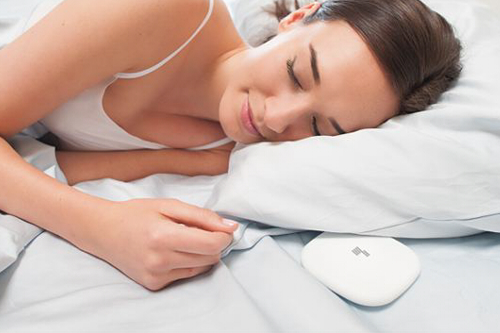New AI Tool Will Help You Sleep Better
Alice Williams
A good night’s sleep is the foundation for a healthy life. Insufficient sleep leads to daytime drowsiness and impaired cognitive function, and it can put you at risk for more serious conditions such as heart disease, high blood pressure, and diabetes. Understanding sleep and the issues around it is an essential public health concern.
“When we become sleep-deprived, the effects are astonishing,” said Dr. Sujay Kansagra, director ofDukeUniversity’s sleep medicine program and sleep health consultant for Mattress Firm. “Even a single night of disrupted or shortened sleep can wreak havoc on our bodies. In addition to the sleep you need every night, lost sleep will accumulate, causing you to need to sleep even more to make up for any hours previously missed.”
Due to the importance of sleep to public health, researchers are racing to find new ways to monitor and improve sleep habits, including using artificial intelligence (AI). While there are a number of AI sleep technologies to keep an eye on, one, in particular, stands out – a new sensor that uses radio waves translated by machine-learning algorithms to monitor your sleep phases without the need for any intrusive wearable devices.
80% accuracy in identifying sleep stages
Researchers at MIT and Massachusetts General Hospital, including professors of engineering and computer science Dina Katabi and Tommi Jaakkola, as well as Matt Bianchi, chief of the hospital’s Division of Sleep Medicine, joined forces to develop and test the new technology. A wireless device, similar to a Wi-Fi router, emits low-power radio frequency signals, which bounce off of the body. The AI algorithms analyze the data and translate the measurements of pulse, breathing, and other factors into the major sleep stages – light sleep, deep sleep, and REM sleep.
Previous attempts to use radio waves to evaluate the quality of sleep have maxed out at 65% accuracy, but the MIT/MGH team has achieved an 80% success rate in accurately measuring sleep stages, comparable to the accuracy rate of the electroencephalography (EEG) machines currently used in scientific sleep studies. This technology may lead to a greater understanding of sleep and take sleep studies out of the lab and into the real world.
“The opportunity is very big because we don’t understand sleep well, and a high fraction of the population has sleep problems,” says Mingmin Zhao, an MIT graduate student working on the project. “We have this technology that, if we can make it work, can move us from a world where we do sleep studies once every few months in the sleep lab to continuous sleep studies at home.”

How it works
Previous attempts to use radio waves and AI to measure sleep stages have been hampered by the extra information, not related to sleep, and that confuses the AI algorithms. The MIT/MGH team came up with a combination of three deep neural network algorithms to get the measurements they were looking for. The first uses a neural network for image recognition to parse snapshots of the data. The second uses a neural net for temporal pattern measurement to calculate the dynamics of the various sleep stages – light, deep, and REM. A third refines the analysis to make it comparable across test subjects. The team tested the sensor and algorithms on 25 healthy patients, measuring sleep stages with the aforementioned 80% accuracy.
Potential uses
The researchers intend to also study how Parkinson’s disease affects sleep. “Both sleep issues and cognition are important, but often overlooked, contributors to the burden of the disease,” says Joyce Oberdorf, president and CEO of the National Parkinson Foundation. Further research may be able to lessen those burdens.
Other potential uses include the study of sleep apnea, chronic insomnia, and even hard-to-detect mid-sleep epileptic seizures, along with studying sleep disorders that can be precursors for other problems. Beyond sleep application, similar combinations of sensors using radio waves monitored by AI algorithms may be used to measure and predict the decline of function in a number of other health areas. One thing is for sure – an increase in available health information is imminent.








